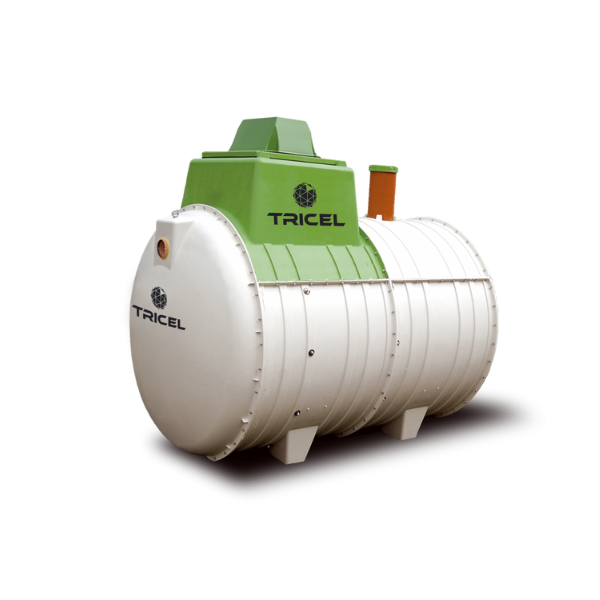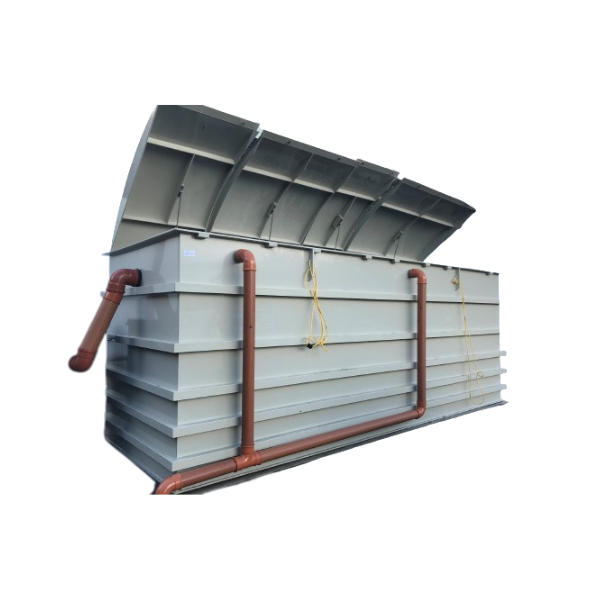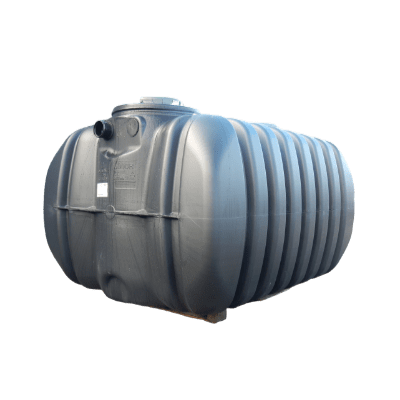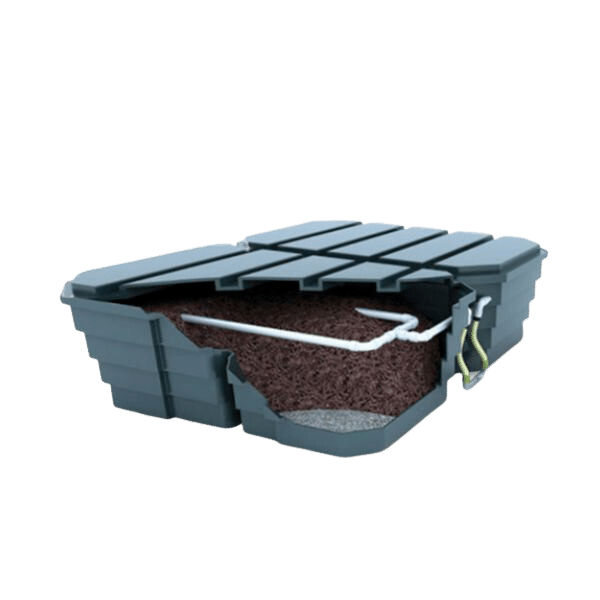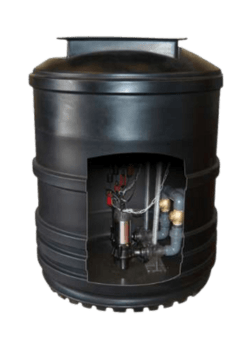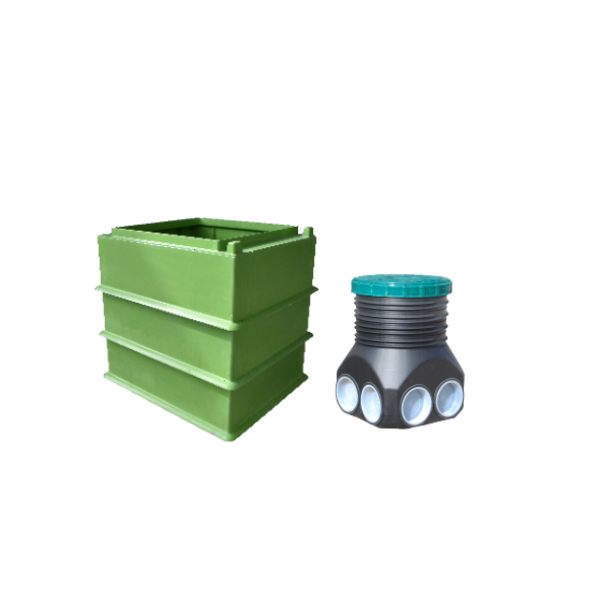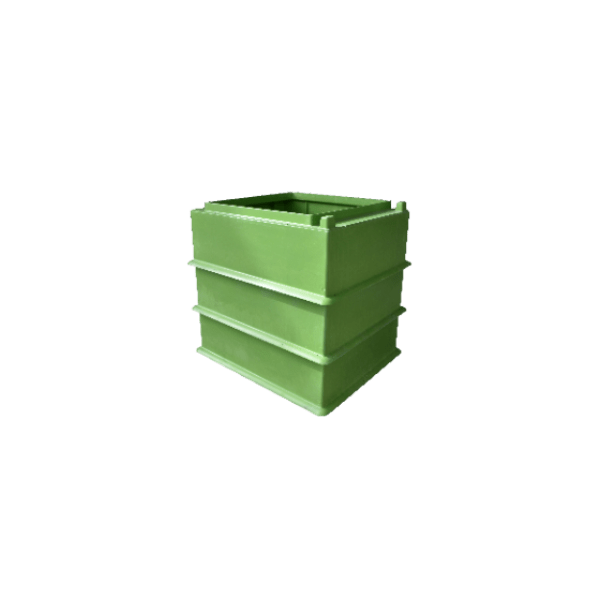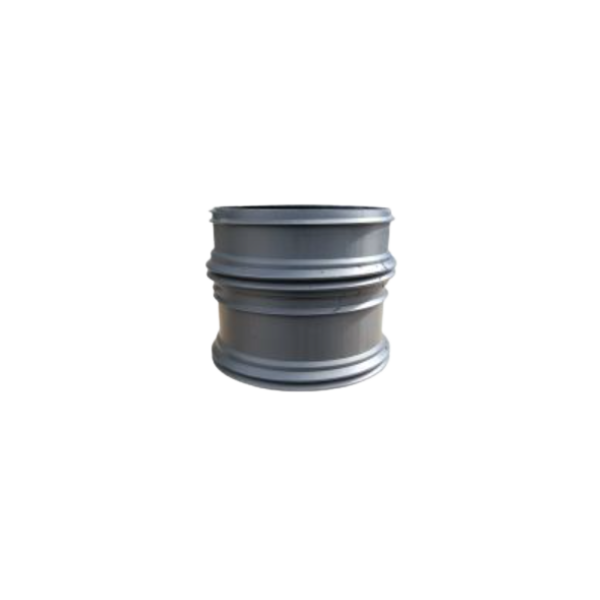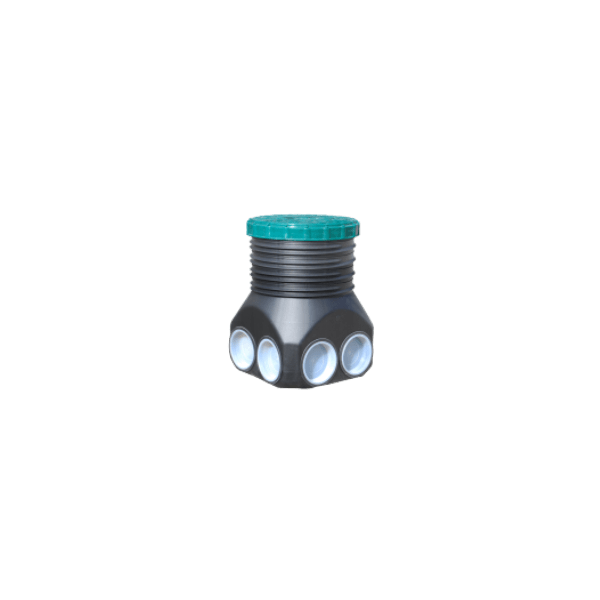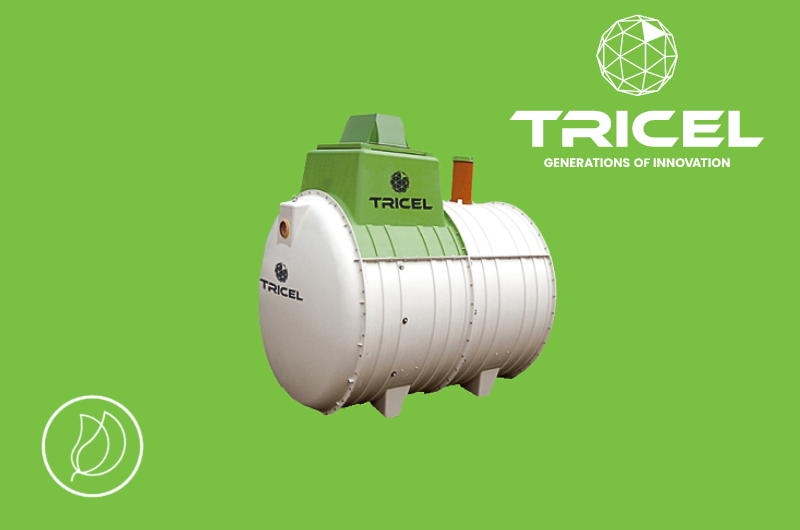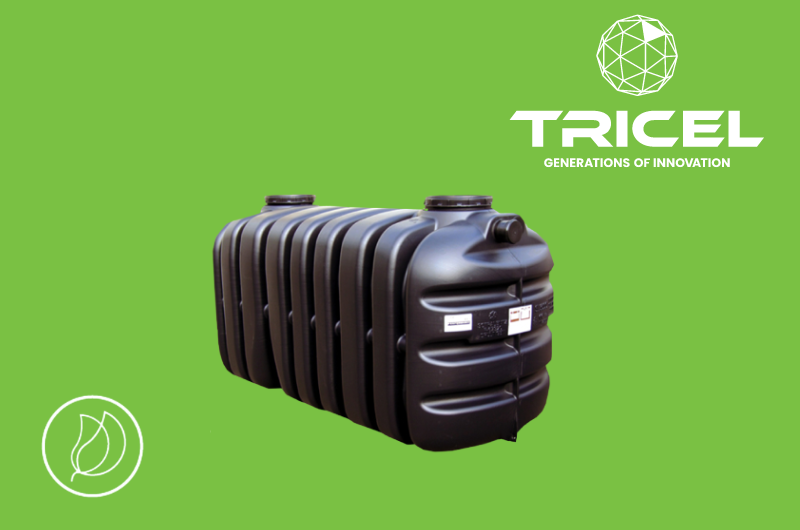SEWAGE TREATMENT
Why install a Septic tank vs Sewage treatment plant?
OVERVIEW
According to EN 6297:2007 and H2 building regulations, a septic tank can be installed if the water table is at least one meter below the outlet.
The sewage treatment plant will be needed if your property is in a flood-risk area. Let’s discover why install a Septic tank vs Sewage treatment plant by Tricel.
Sewage Treatment Tank vs a Septic Tank?
A site’s characteristics ultimately determine the choice between both options. The site’s drainage properties are key factors in determining the appropriate sewage treatment product. It is common for both septic tanks and wastewater treatment plants to discharge effluent into drainage fields.
Percolation tests are normally performed by professional installers; EN 6297 describes the correct procedure. The drainage field of your septic tank must be located on highly permeable ground to function properly. In the case of a clay soil plot, the only viable option is a sewage treatment plant.
It is also important to consider the likelihood of flooding at the site and the depth of the water table. In the best-case scenario, septic tanks remove about 30% of pollutants, which is why a septic system installed in the wrong location is likely to smell unpleasant and to allow solids to reach the surface. As a result, groundwater (the water we drink) will be polluted in a short period of time, posing a severe health threat.
Get professional advice on off-mains drainage
Tricel can advise whether you are building a new home or replacing an existing system. We will assist you in selecting the right product for your needs and support your project throughout installation and aftercare while helping you meet environmental and legislative requirements. To take the next step in your project, schedule a site visit.
Interact with the Domestic Sewage Treatment Plant
SEWAGE TREATMENT PLANT – TRICEL NOVO
- Reliable
- Easy to install
- Simple to maintain
- 20 years warranty
SEPTIC TANK – TRICEL VENTO
- Low profile
- High strength & durable
- Lightweight
- 10 years warranty
Tricel Novo: Key features & benefits
The compression moulding process is one of the most technologically advanced features available on the market. Components are manufactured under heat and high pressure. They have a competitive strength and durability over standard GRP tanks or PE tanks.
SMC is a unique material in the sewage treatment industry with Tricel SMC tanks operating in some of the harshest climatic conditions for over 50 years with no defects.
Tricel’s ceramic diffuser will last twice as long as all standard competitors rubber equivalents. It is a cost-saver in both call out fees and replacement parts.
No concrete backfill for installation on most sites which allows you to save up to €400 over lower quality GRP/plastic competitors.
There are no moving parts or pumps in the plant which is ensuring reliable operation during the treatment process and minimal running costs.
Tricel Novo plants are designed with a shallow invert to limit both installation and time costs.
MEET OUR TEAM
To find a technician in your area, visit our page
TALK SEWAGE TREATMENT
To speak to one of our agents online, click here
ASK FOR A QUOTE
Request a free quote today to have a quote that meets your project!
Key Features

Fast Delivery
Fast delivery + Rapid response to all our customers

Certified
Tricel Products are certified to EN12566-1 and EN 12566-3 certified

Technical expertise
Unrivalled technical expertise by our sales team regarding wastewater treatment solutions
Frequently Asked Questions
A cesspool is a simple storage vessel with an inlet and no outlet. It’s a sealed storage vessel; all the water coming in stays within the tank. The advantage is it doesn’t need an outlet. The disadvantages are: there is no treatment, the tanks are huge, and it needs regular emptying. Everything which has gone in must be sucked out. Ideal for sites which have got very infrequent use (Sheppard huts, for example).
A septic tank has an inlet and an outlet; it’s a simple overflow system. See how a septic tank works here. The advantages of the septic tank are there is no mechanic and no electricity requirement for it to work. The disadvantages are you are discharging dirty water, and untreated sewage effluent, as a tiny breakdown has occurred in the tank. You can only release water to a drainage field for the water to go through the subsoil to treat the water.
A sewage or package treatment plant has an inlet and an outlet; the wastewater is treated inside the tank. Aeration is provided inside the tank for the aerobic bacteria to feed on the waste and remove it from the liquid. The advantages are the wastewater is treated and can be discharged to a watercourse.
Many package treatment plants are available on the market:
- Trickles filters
- Rotating Biological Contactors (RBC)
- Mobile media bio-reactors
- Activated Sludge systems
- Sequence Batch Reactor systems (SBR)
- Fixed Bed Systems (like the Tricel Novo)
Domestic wastewater is all wastewater generated inside the house, including grey water from sinks, showers, baths and sewage from toilets. Rainwater is not classified as greywater and should be directed to a soakaway.
A trial hole can be dug during the site assessment and left open for 48 hours to determine this. The ground level is used to measure the water level.
After the water is discharged, it must flow into a drainage field or a running watercourse. It will fail and block up very quickly whenever it is released directly into the ground. It will also violate the government’s General Binding Rules for small sewage discharges—more information on this page.
Get in touch
